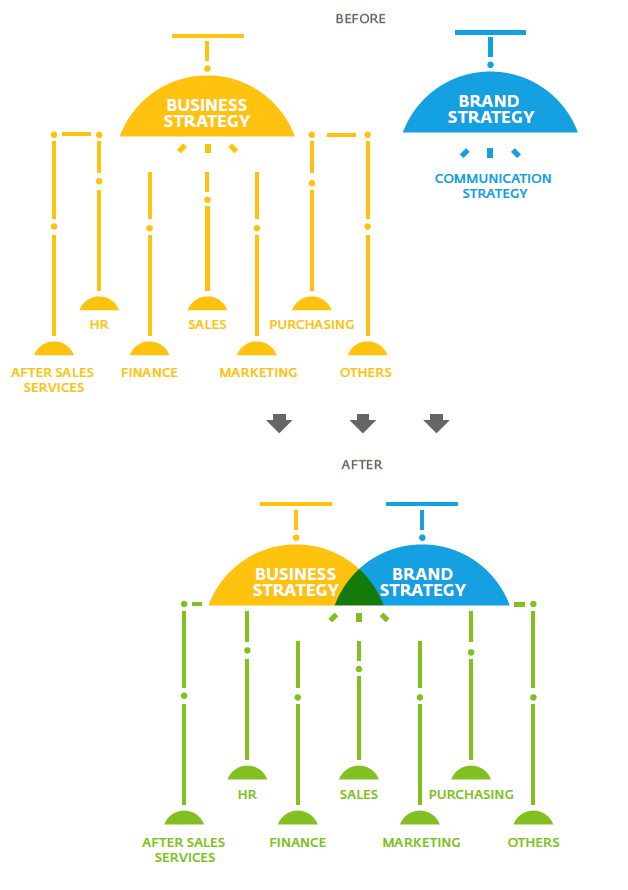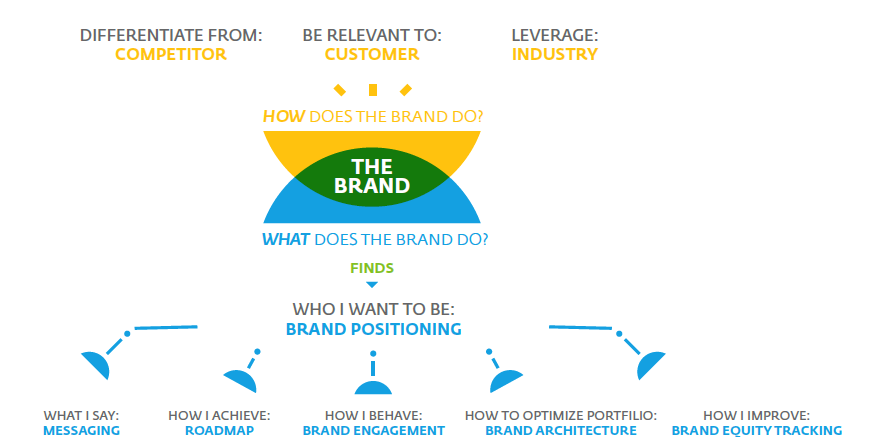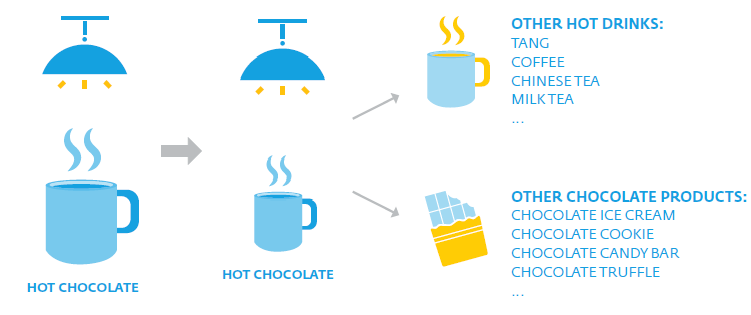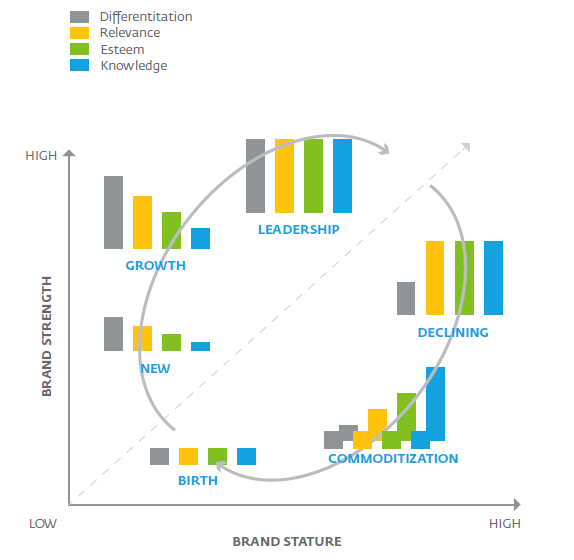

Branding is not just limited to marketing; it plays a crucial role in guiding marketing strategies. In 2023, China experienced a modest GDP growth of 5.2%, as highlighted in the annual economic report. This economic climate prompted companies to adopt cost-cutting measures such as downsizing and reducing branding budgets. However, it is important to recognize that branding is not merely a significant investment with long-term planning; it also yields tangible results. Effective brand management can have a substantial impact on a company’s success, driving customer loyalty, market differentiation, and ultimately, financial returns. Therefore, understanding the true value of brand management is essential for companies seeking sustainable growth and market relevance in an increasingly competitive landscape.
First of all, the slowdown in the economic growth doesn’t mean a weak economy. On the contrary, China’s contribution to the global economy is much more significant than 10 years ago. Meanwhile, the aggregate economic volume is still growing. Former Chairman of the US Federal Reserve once pointed out that the slowdown is quite natural given that the Chinese economy is transitioning from an exporting and manufacturing led labor-intensive economy to one that focuses on technology development, market consumption and the service sector. Gone are the days that companies are able to get away with unsophisticated, unsustainable and value-lacking management.
Secondly, the role of brand strategy and management has changed. It is no longer a component that simply serves to guide marketing tactics, but has become a core organizational principle that drives performance, culture, experience and behaviors. Therefore, with the evolution of the Chinese economy, the formula of branding has transformed as well. Before, many agencies offered abstract brand concepts and broad implementation recommendations. Now, a systematic roadmap of brand actions needs to be developed. (Diagram 1)

Branding is a detailed and systematic long-term process, which should be continuously adjusted based on different stages of brand development. A brand experiences several stages during its growth: new brand (birth), growing brand (growth), and leading brand (leadership).
In the following article, we will discuss in detail what the focuses should be for different branding phases in an evolving economic environment. (Diagram 2)

Brands should first clearly define “who they want to be”. This is a prerequisite for success. We often determine this positioning based on three aspects: the industry, the customers, and the competitors. Years ago, an unclear brand positioning might not have a devastating impact in certain industries where there wasn’t much direct competition (e.g. high-end toys, healthcare, online tourism etc).
Nowadays however, an increasing number of international and domestic brands are entering the Chinese market. Many industries have become so saturated that competition is no longer limited to one category. For example, while a hot chocolate brand may have no direct competition within its category, it still competes with a multitude of beverage and snack brands. Because of this replacement consumption, there remains practically no industry that contains zero competition. (Diagram 3)

Meanwhile, the economic slowdown affects the confidence of investors, making them cautious about investing big capital into the market. They need conviction. In this case, brand positioning plays the role of the persuader – it showcases products, services, and creativity, and tells the story behind business plans and financial success.
This brings us to another milestone of China’s economy – the growth rate of consumption has surpassed that of investment for the first time, transforming into an economy that thrives on internal demand and consumption. According to a Chinese consumption trends report recently published by Boston Consulting Group, China is estimated to become the world’s second largest consumption market in the world with 5% of global consumption volume, and growing by $2.3 trillion over the next five years. 65% of this growth will be generated by China’s post 80s, 90s and 00s consumers.
These new consumers spend very differently than their predecessors. It is crucial for brands to investigate into this unique, independent, and ever-changing group of people to better target their brand strategies.
At its core, brand positioning should not just consider the industry, the consumers and the competitors, but rather should lead the industry, meet the needs of the target consumers, and establish differentiation against the competitors.
Brand positioning is not just the guide for marketing communications. It is the emotional realization of a company’s core competence, value proposition and unique attributes. Most importantly, it is the framework with which business strategy should be examined.
Every day from the moment we open our eyes, we are dealing with an enormous amount of information, the majority of which is coming from different digital mediums. A brands’ day to day communication is amongst this ocean of information. How does a brand integrate its positioning into daily communication with its target audience? How can a brand ensure consistency across all platforms and effectiveness in content? This is the subject for brand messaging management. Brand messaging management has similar principles as everyday interpersonal communication. Different choices of wording and expressions that we naturally use shape people’s opinion of us – in order to convey our personality in an effective way, we choose to highlight certain oral and verbal expressions. This is called “tonality”.
Defining the tonality is a basic tool for a brand. It enables a brand to convey its values and visions in a clear and consistent way, painting a comprehensive brand image and imparting vivid brand associations. Verbal communication is just as instrumental to a brand as its visual elements.
In order to ensure proper implementation across different touch points, brands should create a specific and detailed messaging guide that:

Undoubtedly, brands also need a systematic roadmap that lays out periodic milestones and creates a measurement index to track and realize the brand’s transformation from status quo to the ideal brand positioning. Every effort along the way accumulates brand equity and impacts the brand towards market leadership.
No matter what the category is, brands develop alongside the market as consumers’ understanding grows. Brand development goes through different stages: differentiation makes the brand stand out, relevance follows, and as the brand becomes established in the marketplace its esteem and knowledge increase gradually (Diagram 4). The brand roadmap should take into account these development stages to identify relevant key objectives, map out which activities to prioritize, and grow towards a leadership brand.

Internal brand building, often neglected, is equally important to how a brand is perceived by consumers. Every employee is a brand ambassador. Every action they take speaks for the brand. Companies should implement internally an engaging program in order to infuse the brand’s essence to their employees’ daily work, creating a meaningful experience that is admired and aspired to by outsiders looking in. This is especially meaningful for companies during the slowing down economy.
Through pinpointed management of daily operations, internal brand building can be achieved by integrating a seemingly abstract brand concept into every employee’s daily work habits, regardless of discipline or hierarchy. Only by growing from the core outwards can the brand essence be actualized and touch the consumers.
The fast economic growth over the past 30 years has led to the rapid expansion of many businesses. Over time, any successful brand will develop a brand architecture to cross over into other offerings or markets, whether vertically or horizontally. A massive and unorganized brand system undoubtedly confuses consumers and affects brand equity. A systematic and logical framework to organize and structure existing and future (sub) brands is needed in order to create organic synergy between the brands.
Meanwhile, such a clear architecture will help customers and stakeholders to understand their relationship with the brands and to facilitate cooperation. Surely, brand architecture has multiple forms and should not be static. For brand owners, this selection should be based on their current needs and vision for the future, and should fundamentally consolidate the company’s business model.
As legendary Chinese military strategist Sun Tzu once said, “Know the enemy and know yourself, and you can fight a hundred battles without defeat.”
It is undeniable that branding requires high investment whose value goes beyond sales volume. How should brands evaluate their return on investment?
The answer is Brand Equity Tracking. It is a comprehensive management tool that diagnoses branding performance in terms of Brand Equity Mapping, Brand Driver Analysis, Competitive Landscape and Information Sources. It also sheds light on the branding direction for the next few years with a clear set of strategic options, and enables brands to make well-balanced and informed decisions regarding the development and implementation of new branding and marketing strategies.
Brands should conduct such audits on a regular basis to evaluate what has been achieved through carefully planned roadmap and implementation, and diagnose the overall branding performance. Once a problem is identified, brands can adjust and react strategically, so that positive and sustainable brand growth can be assured.
The transformation of China’s economic structure is an important turning point for brands. It is an opportunity to examine themselves in the context of an increasingly sophisticated market situation. As with any long-term investment, branding is a systematic process and cannot be perfected instantly. Yet, the accumulation of brand equity is a key leveraging point for a company’s success, so there is no better time than now to get started.
Labbrand Strategy Team
A Labbrand Group Company © 2005-2024 Labbrand All rights reserved
沪ICP备17001253号-3* Will be used in accordance with our Privacy Policy
To improve your experience, we use cookies to provide social media features, offer you content that targets your particular interests, and analyse the performance of our advertising campaigns. By clicking on “Accept” you consent to all cookies. You also have the option to click “Reject” to limit the use of certain types of cookies. Please be aware that rejecting cookies may affect your website browsing experience and limit the use of some personalised features.